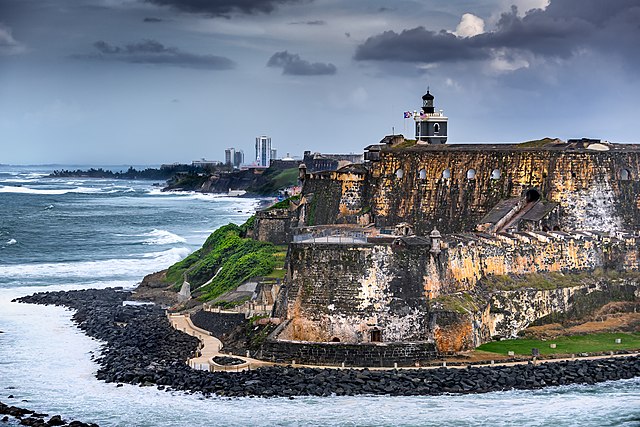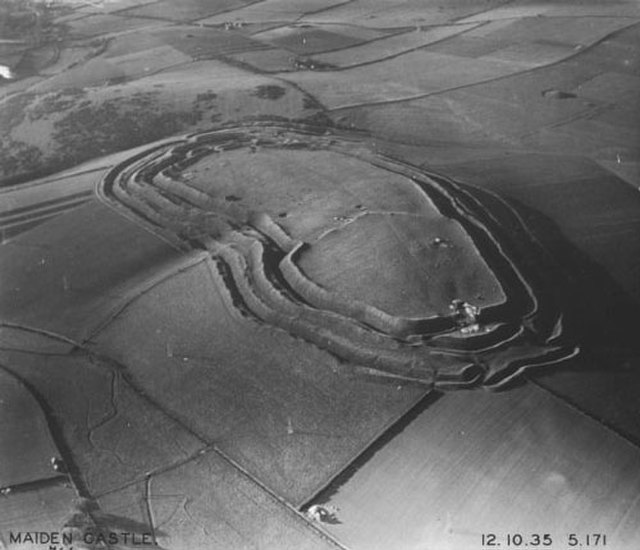A bastion or bulwark is a structure projecting outward from the curtain wall of a fortification, most commonly angular in shape and positioned at the corners of the fort. The fully developed bastion consists of two faces and two flanks, with fire from the flanks being able to protect the curtain wall and the adjacent bastions. Compared with the medieval fortified towers they replaced, bastion fortifications offered a greater degree of passive resistance and more scope for ranged defence in the age of gunpowder artillery. As military architecture, the bastion is one element in the style of fortification dominant from the mid 16th to mid 19th centuries.
Drawing of a bastion
One of the semi-circular bastions at Deal Castle, a Device Fort on the south coast of England
Aerial photograph of Neuf-Brisach, a fortress in use during the Napoleonic Wars
A bastion in the Komárno Fortress (Slovakia).
A fortification is a military construction designed for the defense of territories in warfare, and is used to establish rule in a region during peacetime. The term is derived from Latin fortis ("strong") and facere.
Castillo San Felipe del Morro, Puerto Rico. The fortress and walled city of Old San Juan are a UNESCO World Heritage Site.
Castillo San Felipe de Barajas, Colombia. Cartagena's colonial walled city and fortress were designated a UNESCO World Heritage Site.
Maiden Castle in 1935. The Iron Age hillfort was first built in 600 BC.
Early 20th century aerial photograph of the fortifications of Valletta, Malta, which were built in the 16th and 17th centuries.








